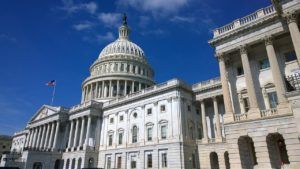
On Wednesday, June 3, 2020, the Senate passed the Paycheck Protection Program Flexibility Act of 2020 (the ”Act”), which the President signed into law on June 5, 2020. This Act significantly changes the Paycheck Protection Program. Note, we expect additional regulations to modify or clarify aspects of this Act, as was the case with the PPP.
Here are some highlights of this new Act:
- Maturity Date Extended to 5 Years. The maturity date of PPP loans has been extended from 2 years to 5 years for the remaining unforgiven balances. This extension should greatly ease the burden of repayment on entities that do not receive 100% forgiveness (“though all entities should, with proper planning and new requirements strive to obtain 100% forgiveness”). We hope to help our clients avoid potential cashflow catastrophes.
2. PPP Covered Period Extended. The PPP Covered Period has been changed from February 15, 2020 – June 30, 2020, to February 15, 2020 – December 31, 2020. Additionally, the covered period for forgiveness purposes has been extended from eight weeks from loan origination to the earlier of twenty-four weeks from loan origination or December 31, 2020. An election may be made to still use the original eight-week period. This extension can greatly help businesses who may now use the PPP funds over the extended period rather than rushing to spend it over eight weeks.
3. Forgiveness Determination Changed to Include Impact by Government Agency Proclamations. Businesses may avoid forgiveness reduction, due to the FTE comparison, if the business
- “is able to document an inability to return to the same level of business activity as such business was operating at before February 15, 2020,
- due to compliance with requirements established or guidance issued by the Secretary of Health and Human Services, the Director of the Centers for Disease Control and Prevention, or the Occupational Safety and Health Administration during the period beginning on March 1, 2020, and ending December 31, 2020,
- related to the maintenance of standards for sanitation, social distancing, or any other worker or customer safety requirement related to COVID–19.”
The addition of such factors in the determination of what is forgivable may allow businesses to avoid having to bring back unnecessary employees just to meet the previous FTE requirements of the PPP program. Again, we anticipate regulations to clarify levels and type of proof required to meet these new factors.
4. Lower Percentage Required for Payroll. PPP originally required at least 75% of the forgivable amount be spent on payroll. That minimum threshold is now 60%, leaving the remaining 40% to be spent on qualified expenses. Again, we strongly encourage you to work with attorneys to make sure you are correctly allocating expenses. Remember, you only one shot at getting your PPP loan forgiven, and there is no appeals process.
5. Loan Deferment Extended. Deferral on repayments of loans has been extended. Such payments are now deferred until forgiveness is determined, up to 10 months after the end of the applicable forgiveness Covered Period.
The Act provides numerous avenues for businesses to fully maximize the potential of the Paycheck Protection Program loans with proper preparation. At SNW, we have been on top of the PPP program since the beginning, and we can assist you with hitting this moving target. Contact SNW partner, Keith Naccari, at keith@snw.law, so that we can help you reassess and adjust your planning. You may be able to save significant amounts of money and increase your loan forgiveness under this new Act.


